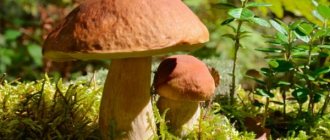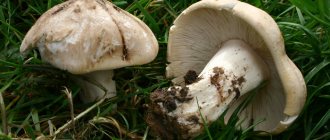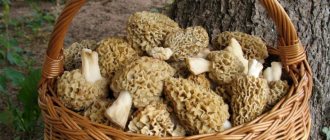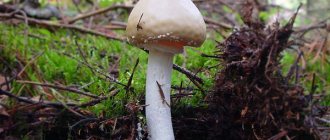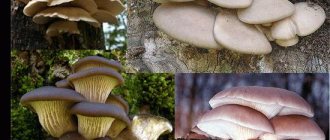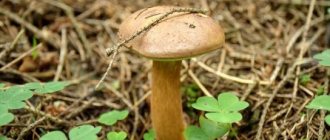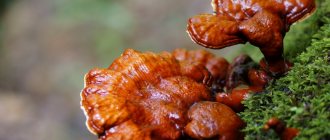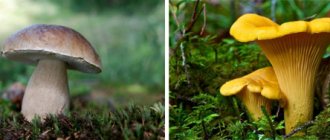What kind of lemon-colored mushrooms are there, what types of lemongrass are there (honey mushrooms, oyster mushrooms, row), what do they look like (photo), how to cook?
Schisandra mushrooms, what photo do you have, what do they look like?
What edible lemongrass mushrooms are there, what do they look like?
Pickled lemongrass mushrooms, how to cook?
Lemon mushrooms, photos, descriptions, how to cook?
Lemon oyster mushrooms, photo, description, how to cook edible lemon-colored mushrooms?
Lemon-colored mushrooms, photo, what do they look like?
Lemon-colored mushrooms in a row, what kind of mushrooms, description, how to cook?
What are edible lemon-colored mushrooms, how to cook them?
Lemon-colored mushrooms on stumps, what kind of mushrooms, how to cook?
What are lemon-colored mushrooms called, description, what kind of mushrooms, photos?
My lemongrass is already more than 5 years old. It does not make high demands on living conditions, but requires regular watering and weeding.
The tree takes root in a spacious, illuminated area. The soil for it can be neutral or slightly acidic. After planting the seedling, be sure to install a support. I present to your attention a photo of lemongrass.
Landing Features
For those who live in warm climates, I advise you to plant lemongrass from October 1 to October 6. In the middle zone, it is better to plant the plant from May 1 to May 10. Schisandra loves spacious, illuminated areas; it does not tolerate drafts and temperature changes. It’s good if you plant 3 trees at a distance of 1 m.
Schisandra, like other fruit plants, does not tolerate waterlogging, so you should not add water too often. Excess moisture can lead to root rot! I do not recommend planting a tree very close to the house; after rain, water will flow onto it in large quantities. Schisandra is planted in a trench 50 cm deep and 65 cm in diameter.
In order for the plant to take root better in a new place, drainage is laid on one. I used crushed brick, laid it in a layer of 10 cm, and sprinkled fertile soil mixture on top.
It’s easy to prepare: turf soil and humus need to be mixed in equal proportions.
To improve the composition of the substrate, you need to add a small amount of wood ash and superphosphate. (wood ash should be twice as much superphosphate).
It is better to prepare the planting hole 15 days in advance. The soil will gradually settle and become compacted. For planting, I used two-year-old seedlings 16 cm high. The roots of such plants are quite developed.
When planting, you need to ensure that the root collar rises 2 cm above the ground. After placing the seedling in the hole, tamp it down and add water to the tree trunk circle.
Experienced summer residents advise forming an earthen roller along the edges of the tree trunk circle. Thanks to it, water does not spread over the area. After planting, water the plant and mulch the soil with humus. Schisandra seedlings are very sensitive to temperature changes. Protect them from direct sunlight by covering them with polyethylene.
Ilmak (lemon oyster mushroom)
Ilmak
- a Far Eastern variety of mushrooms of the oyster mushroom genus, the oyster mushroom family. A tasty and quite popular mushroom among mushroom pickers in Primorye and the Amur region. It grows from early May to October. In the wild, it is found on dead trees or fallen trees of the Far Eastern elm, which is why it got its name. Quite productive. Depending on the presence of rain, it can form 5-7 layers per season. In China, it is successfully cultivated on birch, poplar and aspen wood. A good edible mushroom. Used fresh, dried and pickled.
Lemon oyster mushroom (ilmak)
Medicinal properties of oyster mushroom
In folk medicine of China and Korea, lemon oyster mushroom was traditionally used to treat impotence, dysentery and as a general tonic. In China, lemon oyster mushroom tincture has long been used to treat emphysema.
Modern studies of lemon oyster mushroom have revealed significant antioxidant, bactericidal and antitumor activity. Lovastatin, contained in the fruiting bodies of ilmak, can effectively reduce blood sugar levels and prevent the deposition of cholesterol. Polysaccharides found in lemon oyster mushroom, in addition to antitumor and immunostimulating properties, have the ability to act on viruses that cause enteroviral heart lesions.
Among other things, mushrooms of the oyster mushroom genus are capable of removing oxidation products from the kidneys and liver, and also have a radioprotective effect. When eliminating the consequences of the accident at the Chernobyl nuclear power plant, oyster mushroom dishes were recommended for regular consumption by the disaster liquidators.
Medical studies have shown that preparations from oyster mushrooms are effective against both malignant and benign tumor formations. To date, antitumor drugs have been obtained and patented from the oyster mushroom, successfully suppressing the development of degenerating cells.
For medicinal purposes, tincture, mushroom powder and juice of fresh mushrooms are used.
Oyster mushroom tincture
There are two ways to prepare tincture from fresh oyster mushroom fruit bodies: with 40% alcohol (vodka) and with Cahors wine.
To treat mastopathy and prevent cancer, take 300 g of good fresh mushrooms along with the stalks. The stalks are cleared of soil (not washed), the mushrooms are finely chopped, placed in a glass jar and filled with 0.5 liters of 40% alcohol or vodka. Insist for two weeks in a dark place. Take a tablespoon without straining once a day before meals.
To prevent influenza and treat colds, as well as as an immunostimulating agent, the following composition is used: 100 g of oyster mushrooms are infused in 500 ml. vodka. Use 1 teaspoon three times a day before meals. Children over one year old: 1-2 drops with a small amount of water twice a day.
For cardiovascular diseases, neuroses and insomnia, a tincture of oyster mushroom with Cahors wine is considered quite effective. To prepare a tincture for 0.5 liters of wine, take 50 g of finely chopped mushrooms (caps along with legs). Leave for a week in a dark place. For cardiovascular diseases, take 1 tbsp. spoon 3 times a day before meals. For insomnia and neuroses – 2 tbsp. spoons before bed.
Schisandra care
In order for lemongrass to grow well, you need to water it regularly, loosen the soil in the circle around the trunk without damaging the roots. Any garden crop needs weeding. Don't forget to remove weeds near young seedlings. Schisandra must breathe well: spray it periodically, and add water more often during drought.
I use 5 liters per plant. I note that seedlings positively perceive heated water. Young plants are not fed; they begin to apply fertilizers 3 years after planting in open ground.
At the beginning of April I feed the trees with minerals. I add 25 g of saltpeter per 1 square meter, after which I water the plant and mulch the soil.
In the summer, I advise you to use organic matter: add a ten percent solution of mullein. You can use chicken manure instead: 1 part fertilizer to 20 parts water. In the fall, I feed the tree with a complex product, combining 80 g of wood ash with 15 g of superphosphate. I plant the fertilizer in the tree trunk circle, after which I add water.
Schisandra should be grown on a trellis so it will receive more sunlight. My tree produces large juicy berries. If you do not use a trellis, lemongrass is unlikely to begin to bear fruit; in this case, it will be an ornamental shrub.
Place it near the tree in a high guide, then take two pillars 2 m high, deepen them by 70 - 75 cm. Your task is to make sure that the trellises are located at a distance with tensioned wires.
- The first should be at a height of 40 cm.
- The second is at a height of 80 cm;
- The third is at a height of 110 cm.
A young plant needs to be tied to a wire located below. As it grows, it needs to be tied to the threads located at the top.
Distribution by region
Each region has its own popular mushrooms, which are most often found in the forest and end up on the table of mushroom pickers.
Lamellar mushrooms of the Moscow region
The nature of the Moscow region is rich in a large number of mushroom places, which is due to the presence of deciduous tracts, in which the most common are:
- honey mushrooms;
- chanterelles;
- saffron milk caps;
- Russula;
- milk mushrooms;
- Champignon;
- purple and gray rows.
The peak of the harvest occurs in August-September. There are dozens of places in the region where you can organize a “quiet hunt”; popular ones include Ruzsky, Yegoryevsky, Odintsovo, Kolomensky, Meshchersky and Dmitrovsky districts.
Mushrooms of the Leningrad region
The Leningrad region is famous for its coniferous forests, in which you can find:
- chanterelles;
- red and yellow russula;
- bitters;
- black milk mushrooms.
The collection season begins at the end of April, the peak month is August, during which toadstools and fly agarics also actively grow. The villages of Sosnovo and Snegirevka are considered popular fertile places.
Views of Belarus
The climate of Belarus, as well as extensive coniferous, mixed and deciduous groves, are ideal for the emergence of a large number of mushroom places. The following grow on the territory:
The collection period lasts from April until the first frost, and in warm and humid September, autumn mushrooms, such as honey mushrooms, which are popular among mushroom pickers, begin to actively grow. The most productive places are located near Minsk and Vitebsk, their names are the Khatyn forest, Logoischina, the village of Stolbtsy.
Tree pruning
Two-year and three-year-old lemongrass are pruned. Such a tree does not actively form roots; it spends energy on fruits. After pruning, the lemongrass will begin to form shoots; you will need to leave 4 and remove the rest.
I recommend correcting the plant in the fall, when it sheds its leaves. It is forbidden to carry out the procedure in the spring before the sap flows; the plant may die!
Schisandra positively perceives sanitary pruning. Do not forget to remove branches that are too small, as well as dry and damaged branches. If the shoots are too long, shorten them by 12 cm. Caring for lemongrass involves regular removal of root shoots.
I recommend carrying out a rejuvenating haircut, that is, thinning out the branches. The procedure is very necessary for a plant that is 15 years old. It is not advisable to replant lemongrass; the tree, regardless of age, does not tolerate picking well.
Conditionally edible fruits
The main difference between semi-edible mushrooms and regular ones is that they cannot be eaten raw. In order for these varieties to become edible, they must be subjected to additional processing: some types must be boiled repeatedly, draining the broth, while others need soaking and frying.
It is very difficult to distinguish conditionally edible mushrooms from others by external signs, since they do not stand out in anything remarkable.
These types do not contain hallucinogenic or toxic substances, but some types have a specific taste that disappears during their preparation.
Read also: The best early potato varieties
These fruits have representatives that contain either milky juice, for example, milk mushrooms, milk mushrooms, or mildly toxic substances - contained in the lines. In the first case, you can get rid of this by soaking the mushroom for a while, in the second - by drying and repeatedly boiling it.
The most famous of the variety:
- milk mushrooms white and black;
- milky white and brown;
- purple row;
- poplar row;
- winter honey fungus.
Reproduction methods
My friends advise propagating lemongrass by dividing the bush. Seed propagation is rarely practiced, but we will still consider it.
- In the spring, the seeds are collected and separated from the seedlings before sowing into a fertile substrate. Seeds undergo stratification for 2 months and should be kept under film.
- Shoots will appear 15 days after sowing in the soil substrate; they will need to be placed in a lighted place. Sprouts should not be exposed to sunlight.
- For speedy germination, it is necessary to treat the crops with a weakly concentrated solution of potassium permanganate.
- After some time, the seedlings will form 3 leaves; you will need to plant them in larger boxes.
Seedlings benefit from hardening: keep them at room temperature and periodically ventilate the room.
Open the window for a few minutes and increase the ventilation time daily. When planting, maintain a distance between specimens: it should be about 15 cm. You will see seedlings in 3 years.
Growing at home and in the country
There are 2 ways to grow mushrooms. The first one involves the use of natural material – tree trunks. The second is more common, and it involves growing oyster mushrooms on a substrate that is placed in plastic bags.
Wood logs are used outdoors, and bags are placed in the basement or greenhouse. The optimal place is considered to be a deep and spacious cellar. It is recommended to maintain the temperature and air humidity.
Useful materials for growing Oyster mushrooms in bags can be divided into two types. The first is the cultivation of mycelium, and the second is the production of fruiting bodies.
To feed mushrooms in bags, the following resources are usually used:
- sawdust;
- wheat or barley straw;
- sunflower seed husk;
- chopped corn cobs;
- buckwheat husks, etc.
The main thing is that the substrate is sterile. To do this, you need to disinfect the room and substrate. To carry out this procedure, you will need specialized antifungal drugs or bleach, close the cellar for two days, and then ventilate it.
It is also necessary to disinfect the plastic bag. The best solution for this disinfection is potassium permanganate or bleach, and it is made several days before filling with mycelium.
The bag should be filled in layers - a 5 cm layer of substrate, then 5 mm of mycelium. The bag starts with the first layer of substrate and ends with the last, then the neck is tied and holes 1 cm in size are cut.
The incubation period takes place in twenty days. This process of mushroom growth is visible through the bag.
It is during this period that the lighting is turned on, which lasts eight hours every day, since this is the optimal daylight hours for mushrooms. We must not forget about spraying parts of oyster mushrooms that are already visible above the bags. This must be done from a spray bottle, and the water temperature should be 20 - 25 degrees. The room must be ventilated daily.
After seven to ten days, fruiting bodies appear, their growth lasts about five days. The first harvest is harvested within a month after the bag has been formed. Mushrooms must be picked carefully and cut off at the base of the stem. You need to use a sharp knife so as not to damage the mycelium. It is recommended to harvest the next harvest in 20-30 days. Over time, the nutritional and beneficial properties of the substrate decrease, after which the material that has served its useful life can be used as fertilizer for the garden.
Harmful insects, diseases
Schisandra produces a rich aroma, so pests rarely attack it. The most common diseases:
- leaf spot;
- phyllosticosis;
- powdery mildew.
The tree is disease resistant, but sometimes it becomes infected with leaf spot. With this disease, spots with black dots appear on the surface of the leaf blades. To destroy the infection, you should treat the lemongrass with a copper-containing agent.
Phyllosticosis is a disease in which black spots with a characteristic purple rim appear on the leaves. Adult plants are susceptible to phyllosticosis. In the fight against this disease, copper-containing agents are used.
Ramulariasis is a disease of fungal origin. It manifests itself as round or asymmetrical spots, which are located singly. These spots are brown in color and covered with a pinkish coating. To destroy the fungal infection that led to the development of this disease, fungicides should be used.
A sign of powdery mildew is spots on the leaf blade. over time they darken and become denser. For treatment, a soda solution is used; if it does not help, preparations with copper are used. Schisandra is planted not only in the Moscow region, but also in Siberia. Young plants are covered with leaves for the winter; adults are resistant to cold.
Answers to common questions
There are a lot of mushrooms with white stems, and not all of them are safe. Having examined each species, studied the description, and known the rules for collecting them, you can confidently go into the forest.
The mushroom season is in full swing, and the forests are gradually flooded with novice and experienced mushroom pickers with buckets, backpacks and baskets. There are a great variety of mushrooms growing in Russia, but among this variety there are often inedible mushrooms, or even deadly poisonous ones. Everyone must understand these mushrooms, since the health and lives of not only the mushroom pickers themselves, but also their loved ones may depend on this. And if the appearance of the pale toadstool and fly agaric is known even to children, then difficulties may arise with other poisonous mushrooms.
Varieties, varieties
There are several popular types.
- Chinese. The maximum height of a woody plant is 10 m. The leaves have a darkish color, their length, as a rule, does not exceed 9 cm. Chinese lemongrass is distinguished by large pinkish flowers, 1 piece in diameter. — 14 cm. The tree begins to bloom in May.
- Crimean. The plant is found in Crimea; gardeners value it for its resistance to cold. Crimean lemongrass, like other species, prefers sunny beds. The leaves of this plant are used in cooking and aromatic drinks are brewed from them. The plant is low-growing, its maximum height is 75 cm.
- First born. This is not a species, but a variety, its maximum size is 1.9 m. The advantage of the tree is that it is resistant to cold and temperature changes. Its fruits are small and ripen in August.
- Sadovyi-1. This variety is often cultivated in the middle zone. The plant is presented in the form of a tall vine, its leaves are rich green, emit a characteristic lemon aroma, and the fruits are sour.
Evaluation of taste qualities, medicinal properties, benefits and possible harm
The red row belongs to the 4th category of mushrooms, is considered conditionally edible, and does not have any special taste or qualities. This species is not very highly valued by lovers of quiet hunting.
Nevertheless, some mushroom pickers collect young fruits, pickle them, salt them, and fry them after preliminary boiling.
It is known that pine honey fungus contains the bioactive component fomecin B, it was discovered recently. This substance has powerful anti-inflammatory, antioxidant properties and resists malignant tumors.
ATTENTION! The therapeutic effects of the yellow-red row have yet to be studied by specialists, so you should not self-medicate, putting your life in danger!
Like most medicinal mushrooms, this species contains a lot of protein and vitamins. Its use has a beneficial effect on the nervous system and improves immunity.
However, children under 12 years of age, pregnant and lactating women, and people with diseases of the gastrointestinal tract, liver and kidneys should not eat the row.
Pine honey fungus mycelium can be purchased for growing at home; its cost is about 400 rubles/100 grams.
External description
Lemon oyster mushroom (Pleurotus citrinopileatus) is a variety of ornamental and edible mushrooms, the fruiting body of which consists of a stem and a cap. It grows in groups, and individual specimens grow together, forming a beautiful lemon-colored mushroom cluster.
Mushroom pulp is white and smells like flour. In young specimens it is soft and tender, but in mature mushrooms it becomes rough.
The stem of the mushroom is white (yellow in some specimens) and comes from the central part of the cap. In mature mushrooms it becomes lateral.
The diameter of the cap is 3-6 cm, but in some specimens it can reach 10 cm. In young mushrooms, the cap is thyroid-shaped, in mature fruiting bodies a large depression appears on it, and a little later the cap becomes funnel-shaped, and its edges become lobed. The bright lemon color of the cap of overripe, old mushrooms fades and acquires a whitish tint.
The lamellar hymenophore consists of frequent and narrow plates, the width of which is 3-4 cm. They are slightly pinkish in color, descending onto the stem in the form of lines. The spore powder is white, but in many specimens it has a pink-violet tint.
Recipes for making Red Ryadovka
If you are still sure that it was the yellow-red row that got into the basket, and not its false double, try preparing delicious, unusual dishes from it.
Primary processing
In order to pickle or marinate mushrooms, you will need to soak them in cool water for a long time.
And for subsequent frying or use in other dishes, it will be enough to rinse thoroughly, clear of forest debris and boil for 40 minutes in salted water with the addition of citric acid.
Cooking
Remove the needles from the caps and stems of the rows and rinse them well in running water. Place in a deep container, add 1 tbsp. salt (per 1 kg of mushrooms), a pinch of citric acid.
Boil for 40 minutes from the moment the water boils. Then drain in a colander to drain excess liquid. Cool and use as intended.
Pickling
In order to preserve forest harvests for the winter, try pickling pine honey mushrooms.
Ingredients:
- rows – 1 kg;
- vinegar 9% – 3 tbsp;
- salt – 1 tbsp;
- sugar – 1.5 tbsp;
- water – 250 ml;
- black and allspice – 5 peas;
- cloves, bay leaf - to taste;
- garlic – 3 cloves.
Cooking process:
- Drain the fruiting bodies, previously boiled in salted water, in a colander and then blanch to remove the bitterness. To do this, you need to immerse them in boiling water for 5 minutes.
- Place the honey mushrooms in clean, dry jars.
- Prepare the marinade. Pour water into a container, add the remaining ingredients: sugar, salt, vinegar, spices. Boil the brine for 5 minutes.
- Strain the broth and pour boiling water over the mushrooms in the jars.
- Seal with plastic lids and place the containers in a cellar or other cool place.
INTERESTING FACT. When marinated, the yellow-red row mushroom retains all its beneficial substances and vitamins.
Frying
To prepare this delicious dish you will not need expensive ingredients, but after a while an unusual, aromatic addition to the side dish will appear on the table.
Ingredients:
- onion – 2 heads;
- rows – 1 kg;
- sunflower oil – 100 ml;
- sour cream – 100 g;
- paprika - a pinch;
- parsley – 20 g;
- salt - to taste;
- ground black pepper - on the tip of a knife.
Cooking process:
- Clean the fruiting bodies and remove the stem tip. Wash and cut into equal pieces.
- Place the mushrooms in a container of salted water and boil for 15 minutes, constantly skimming off any foam that forms.
- Drain the liquid, fill the pan again with cold water and cook for another half hour.
- Peel the onion, cut it into cubes or half rings and fry in vegetable oil until soft.
- As soon as the rows are boiled again, fry them in another frying pan for half an hour.
- Mix mushroom pieces with sautéed onions, spices, salt and paprika.
- Fry for another 10 minutes over medium heat. At the end, add sour cream, simmer a little and serve with chopped herbs.
Pickling
Try preparing pine honey mushrooms this way - you'll end up with a tasty, savory treat for the winter!
Ingredients:
- false rows – 3 kg;
- salt – 4 tbsp;
- garlic – 1 head;
- bay leaf – 2 pcs.;
- black peppercorns – 8 pcs.;
- dill - 2 umbrellas.
Cooking method:
- Clean the fruits from forest debris and pine needles, cut off the lower part of the stem. You can chop them, but it's better to leave them whole.
- Pour cool water over the mushrooms, add 2-3 tablespoons of salt and leave for 2-3 days, periodically changing the water so that the product does not sour.
- Cut the garlic into thin slices. Place a small layer of salt, remaining spices and garlic on the bottom of clean, dry jars.
- Place product in containers in layers until jar is full. In this case, each layer of rows should be no more than 5–6 cm, otherwise they will not be salted.
- Pack the contents of the jars tightly. Cover with a layer of salt, cover with gauze and a lid on top. After 30–35 days, the workpiece can be served.
Season and habitat of the mushroom
Lemon oyster mushroom (Pleurotus citrinopileatus) grows in the southern part of the Primorsky Territory, in mixed forests (with coniferous and broad-leaved trees), on living or dead elms. This fungus also develops well on elm dead wood, and in the northern regions and middle plant zone it is also found on birch trunks. Lemon oyster mushrooms are widespread in the southern parts of the Far East, are well known to the local population there and are used by them as edible mushrooms. It begins to bear fruit in May and ends in October.
Pictures of mushrooms with names. Mushrooms – a collection of pictures for activities with children
Speech therapy classes with children are much more productive if you use special visual material. This is especially necessary to do when the child’s personal experience (on the topic under discussion) is not too great. For example, preschoolers see mushrooms quite rarely and have vague ideas about their different types, so high-quality images of these “forest gifts” make it possible not only to develop children’s speech, but also to significantly enrich knowledge about the world around them and nature.
Recommendations for conducting classes
If you want to use pictures of mushrooms for activities with children, then you should consider several rules for their use:
- Give your child the opportunity to take a good look and study new images in each drawing, and only then use them for educational exercises or games.
- Pay attention to the quality of the pictures. It is best to use special speech therapy illustration sets produced for kindergarten, but you can also take realistic images from the Internet or use photographs.
- Be sure to select a variety of handouts - both subject pictures and plot ones. The first are small cards with single images of mushrooms, and the second are illustrations of a real (hedgehog with mushrooms) or fairy-tale (series of pictures Under a mushroom) situation on the topic. For the development of speech in preschoolers, both types of visual material are necessary.
- Any illustration for classes must be made in a realistic manner, accurately repeating all the elements of the external structure of a particular object.
- It is most convenient to use cards with names that older preschoolers can read themselves.
- Images of mushrooms on a transparent background significantly expand the possibilities of using them when composing stories.
Edibility
Lemon oyster mushroom (Pleurotus citrinopileatus) is an edible mushroom. It has good taste and is consumed salted, boiled, fried and pickled. Lemon oyster mushrooms can be dried. However, in ripe fruiting bodies, only the cap is suitable for consumption, since the stem of the fruiting body becomes fibrous and rough. In some specimens, the part of the cap above the stem is also endowed with such qualities, so it also has to be cut out before preparing the mushrooms for food. It is grown under artificial conditions for the purpose of sale.
How to cook
The mushroom is suitable for any type of culinary processing. It can be pickled, dried and salted. Young mushrooms are soft and tender, unlike adult mushrooms, which become tough. Mushrooms with a “headdress” diameter of no more than 15 centimeters are suitable for food. You can determine the age of a mushroom by the color of its cap: the lighter it is, the older the oyster mushroom.
There are many recipes with heads, among them:
- warm salad with kohlrabi cabbage and oyster mushrooms;
- stewed mushrooms with sour cream;
- hot plate in English.
Mushrooms go best with meat and vegetables; it is better not to add them to fish. Oyster mushroom is especially tasty when fried, as an additional dish to a hot dish.
Oyster mushroom meatballs
Housewives who want to surprise their family with a delicious dinner should prepare oyster mushroom meatballs. To do this you will need the following components:
- 300 grams of mushrooms;
- three potatoes;
- two eggs;
- a third of a glass of milk;
- breadcrumbs (two large spoons);
- onion;
- pepper and salt.
Step by step recipe:
- Boil potatoes until half cooked.
- Rusks are mixed with milk.
- The mushrooms are boiled and chopped in a meat grinder along with the potatoes. You should get homogeneous minced meat.
- Beat the eggs with a whisk in a plate.
- Add crackers with milk, pepper and salt to them.
- Mix everything into one mass and form meatballs.
- Fry them in a frying pan with vegetable oil.
The dish is served with mashed potatoes and vegetable salad.
Oyster mushrooms are revered all over the world. They are unpretentious in growing and cooking. Therefore, you should not pass by if you meet their family on an old rotten stump.
